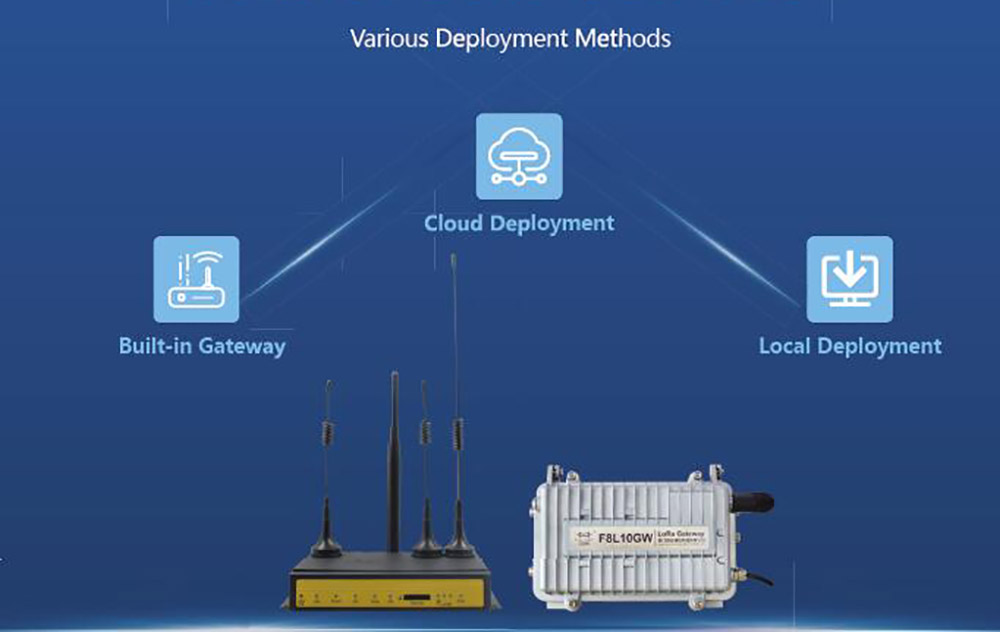A WiFi network extender is a device that can effectively extend the network transmission distance. The WiFi network extender can break through the limitation of traditional Ethernet transmission distance within 100 meters, and can transmit 100M network 500 meters, 10M network transmission 1500 meters or even longer through twisted pair. It extends the limit of the transmission distance of the network from 100 meters of copper wire to more than one kilometer, and can easily realize the interconnection between routers, switches, video recorders, cameras, servers, terminals and long-distance terminals.
1. Introduction of WiFi Network Extender
A WiFi network extender is a device that can effectively extend the network transmission distance. The principle is to modulate network digital signals into analog signals for transmission through telephone lines, twisted pairs, and coaxial lines, and then demodulate the analog signals into network digital signals at the other end. The WiFi network extender can break through the limitation of traditional Ethernet transmission distance within 100 meters, and can extend the network signal to 350 meters or even longer. It expands the transmission distance limit of the network from 100 meters to more than hundreds of meters, and can easily realize the interconnection between hubs, switches, servers, terminals and long-distance terminals.
The WiFi network extender adopts the LRE long-line Ethernet drive technology with independent property rights, which is consistent with the IEEE802.3 standard. This extender provides preamble generation, symmetry and amplitude compensation. Retime signals so that signal jitter from transceivers and cables does not accumulate over multiple network segments. It detects incomplete packets or collisions and generates a jam signal to enhance this detection. Finally detach those problematic ports to make the network work. The transmit port has a digital pre-correction function that compensates for the inherent signal strength degradation inherent in twisted pair cables.
The plug-in network extender is a modular 10M or 100M Ethernet long-distance switch product, which completes long-distance Ethernet optical transmission with mature technology and low cost.
The telephone line network extender replaces the original Cate5/Cate6 network line or fiber optic line with a phone line (Phoneline) or other two-core lines, and connects the phone line bridge Phoneline Ethernet at the front and rear ends of the phone line. Bridge (WD-E200M), the network signal transmission distance can be extended up to 2000 meters (Effect Data Rate UDP can reach 80Mbps). Telephone line bridge Phoneline Ethernet Bridge (WD-E200M) telephone line (you can also use two-core wire to transmit not necessarily telephone signal) The longest distance is 2000 meters.
It needs 1400 meters of access capability of optical fiber through copper Ethernet link, and it is convenient for centralized management with single-slot or 16-slot rack. Common environments include: broadband access, ERP network connection, TCP/IP access control, IP camera connection, etc.
2. Features of WiFi Network Extender
2.1 Use lre (long-reacher ethernet) ASIC for design;
2.2 No protocol conversion, no software support, online plug and play, plug and play;
2.3 Support cascading, multiplying the transmission distance.
The WiFi network extender has ultra-low transmission delay and can forward data packets at wire speed. The WiFi network extender adopts the LRE (Long-Reacher Ethernet) long-line Ethernet drive technology with independent property rights, which can effectively extend the Ethernet transmission distance up to 700 meters, while ensuring the maximum transmission bandwidth. The basic principle is to extend the distance through signal shaping and amplification to increase the sensitivity.
3. Classification of WiFi network extenders
WiFi Network extenders can transmit signals using a pair of cables, and the options are classified as follows:
3.1 Telephone line network extender.
3.2 Twisted pair network extender.
3.3 Coaxial network extender.
4. Application fields of WiFi network extenders
For point-to-point, point-to-multipoint communication, industrial control automation, road traffic control automation, smart cards, attendance, access control, food sales systems, industrial distribution systems, closed-circuit monitoring, security systems, POS systems, building automation systems, self-service banking systems . Telecommunication systems, banking, insurance systems, remote decentralized equipment control, intelligent automatic alarm and fire linkage systems, building automatic control systems, large retail systems, network appliances, etc.
5. The role of the WiFi network extender
It can break through the limitation of traditional Ethernet transmission distance within 100 meters, and can extend the twisted pair electrical signal to 350 meters or even longer. It extends the limit of the transmission distance of the network from 100 meters of copper wire to more than hundreds of meters, and can easily realize the interconnection between hubs, switches, servers, terminals and long-distance terminals.
The WiFi network extender provides preamble generation, symmetry and amplitude compensation. Retime signals so that signal jitter from transceivers and cables does not accumulate over multiple network segments. It detects incomplete packets or collisions and generates a jam signal to enhance this detection. Finally detach those problematic ports to make the network work.




















